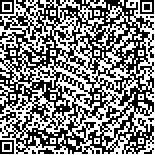张立新,Tyler Aktins,张丽丽,Jay Oakes,路清波,张志强,徐晓明.早期跑台及转轮训练对大鼠脊髓损伤后的功能恢复及ED1表达的影响[J].中华物理医学与康复杂志,2016,38(7):481-486
扫码阅读全文

|
| 早期跑台及转轮训练对大鼠脊髓损伤后的功能恢复及ED1表达的影响 |
|
| |
| DOI: |
| 中文关键词: 脊髓损伤 跑台训练 功能恢复 |
| 英文关键词: Spinal cord injury Treadmill exercise Function recovery |
| 基金项目:国家自然科学基金青年基金(81101462) |
|
| 摘要点击次数: 4127 |
| 全文下载次数: 5141 |
| 中文摘要: |
| 目的观察早期跑台及转轮训练对大鼠脊髓损伤后的功能恢复及ED1表达的影响。 方法选取22只SD大鼠按随机数字表法分为对照组(8只)、训练组(8只)和假手术组(6只)。对照组和训练组制备T9大鼠脊髓挫伤模型,假手术组只进行T9椎板切除术,而不损伤脊髓。去除死亡及造模失败大鼠,最终17只大鼠完成本研究并纳入统计分析,其中对照组6只、训练组5只、假手术组6只。术后第2天开始进行BBB评分,以后每周进行BBB评分。训练组术后第2天开始转轮及跑台训练,每周5次,持续8周;8周后处死各组大鼠,用多聚甲醛心脏灌流固定,包埋后行冰冻切片,损伤处脊髓切片行尼氏染色、ED1及GFAP免疫荧光染色检测脊髓空洞及损伤面积及炎症细胞表达。 结果①术后第2天,假手术组的BBB评分为(20.58±1.44)分,得分最高;对照组和训练组大鼠的后肢失去运动能力或仅残存一个或两个后肢关节轻微运动,2组大鼠的BBB评分差异无统计学意义;评定后训练组开始治疗,术后1周与对照组相比,训练组显示更高的BBB评分(t2,29=6.13,P<0.001),而术后3周、5周直到术后8周,组间差异均有统计学意义(P<0.05);术后第7周和第8周时,训练组的BBB评分分别为(13.60±1.71)和(14.60±1.26)分,而对照组评分较低[(11.83±0.72)和(12.17±0.94)分];但术后2周和4周时,对照组与训练组相比,组间差异无统计学意义(P>0.05)。②组织形态学分析,显示脊髓挫压伤会导致空洞,局部组织结构的丧失,损伤中心白质和灰质均发生变化,空腔会延伸几个毫米,尚存完好的组织淡染并显示部分脱髓鞘变化和小的空腔;假手术组脊髓很完整。与对照组相比,训练组能显著减小损伤面积(P<0.05),但不能减小空洞面积(P>0.05);脊髓损伤后ED1阳性细胞数明显增多[(1905.08±807.38)个],主要表达在空洞周围,与对照组相比,训练组的ED1阳性细胞数明显降低[(687.20±458.02)个],且组间差异有统计学意义(P<0.01)。 结论康复训练可以促进脊髓挫压伤后大鼠运动功能的恢复,其可能机制与康复训练可以减少损伤面积及损伤处炎症有关。 |
| 英文摘要: |
| Objective To observe the effects of early-stage exercise on function recovery and ED1 expression after spinal cord injury. MethodsTwenty-two SD rats were randomly divided into a control group (n=8), an exercise group (n=8) and a sham-operated group (n=6). The control and exercise groups received T9 spinal cord contusions. The sham-operated group received only T9 laminectomy without spinal cord injury. Two rats died within 6 hours after the operation and 3 others were abandoned because of motor function recovery just after the spinal cord contusion. The remaining 17 were included in the statistical analysis: a control group of 6, an exercise group of 5 and a sham-operated group of 6. BBB scoring was conducted 2 days later and then weekly until 8 weeks after the operation. The exercise group began treadmill and wheel running exercise on day 2 and continued 5 times per week until the 8th week. After paraformaldehyde perfusion, fixation and embedding, frozen spinal cord slices were Nissl stained for ED1 and GFAP immunofluorescence measurements. Results Compared with the control group, the average BBB score of the exercise group was significantly higher at each week except weeks 2 and 4. By weeks 7 and 8, the exercised rats showed 13.60 and 14.60 BBB punctuation, which means that those animals took frequent, consistent, weight-supporting plantar steps, consistent with FL-HL coordination. That motor behavior was not achieved by the control group even occasionally. In terms of the tissue morphology and immunohistochemical staining results, the empty area was not significantly reduced in the exercise group compared with the controls, but the damaged area was significantly reduced. In addition, ED1 positive cells in the lesioned area were significantly reduced in the exercised group compared with the controls. Conclusions Exercise can promote the recovery of motor function after spinal cord injury. The mechanism may involve reducing the lesioned area and inflammatory response. |
|
查看全文
查看/发表评论 下载PDF阅读器 |
| 关闭 |
|
|
|